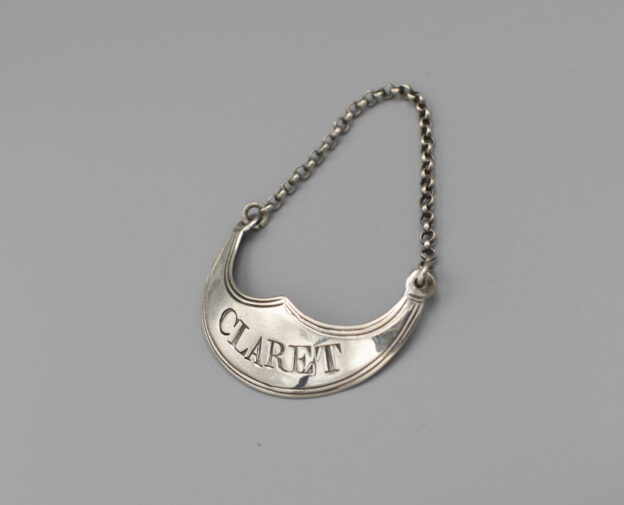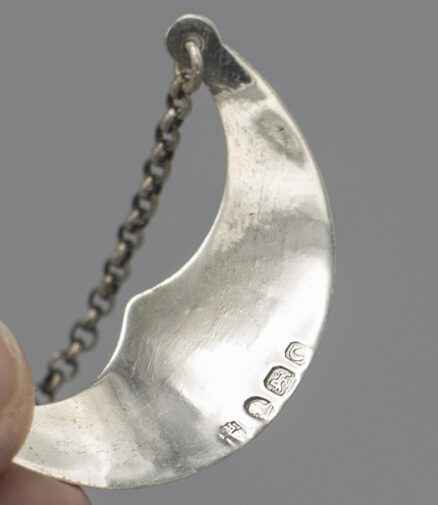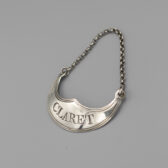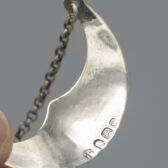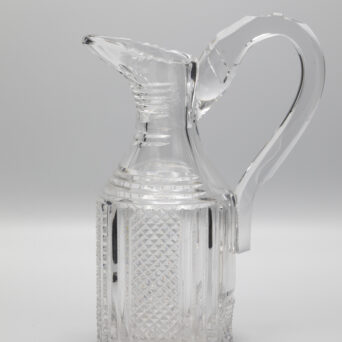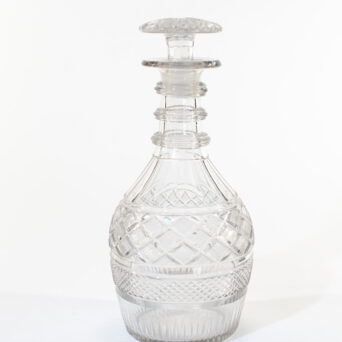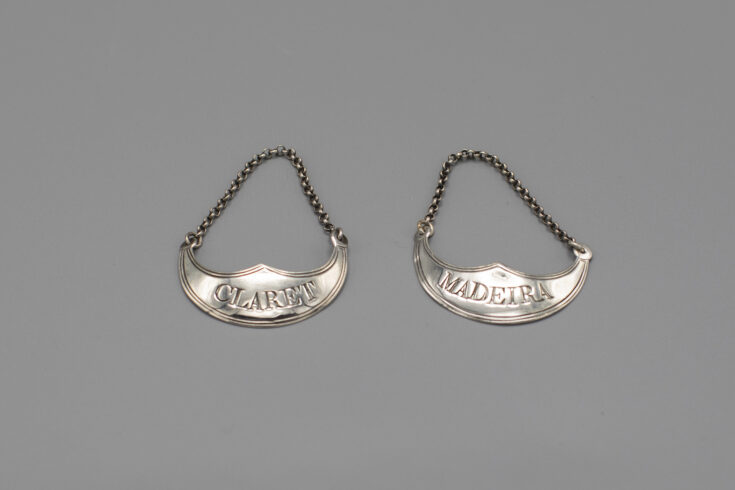
Pair of Antique George III English Silver Decanter Labels
Silver Decanter Labels (name tags) were created to declare the contents within decanters. The decanter label was also known as the “bottle ticket” during the 18th century. Colored Glass Decanters were predominately used at this time and it was difficult to determine what was inside the decanter. As a result of this, silver decanter labels were introduced.
Over time, colored glass decanters eventually gave way to clear glass decanters. This allowed the wine to be seen. The similar colors of decanted wines such as claret, port, madeira, white wine, and others enforced the popularity of the silver decanter label in order to enable identification. Silversmiths created wine labels depicting the wine names in a variety of shapes, sizes, styles, and designs, using chased and engraved techniques.
Early Decanter Labels date back to the 1740’s with rococo influences such as festoons, cherubs, and scrolls. The neo-classical period (1770) saw the introduction of ornate forms. The Regency period saw extravagant silver tableware between 1800-1830 with silver decanter labels often cast with fine detailing. As with wine funnels, large quantities of Antique George III English Silver Decanter Labels were made most notably in the 1770-1850 period.
Our pair of Antique George III English Silver Decanter Labels are designed in an elegant shape and are quite small and dainty. They were normally fitted with a chain so that one could place them over the decanter to identify the contents. They have a double reeded edge and would look exquisite residing on a pair of clear Decanters.
